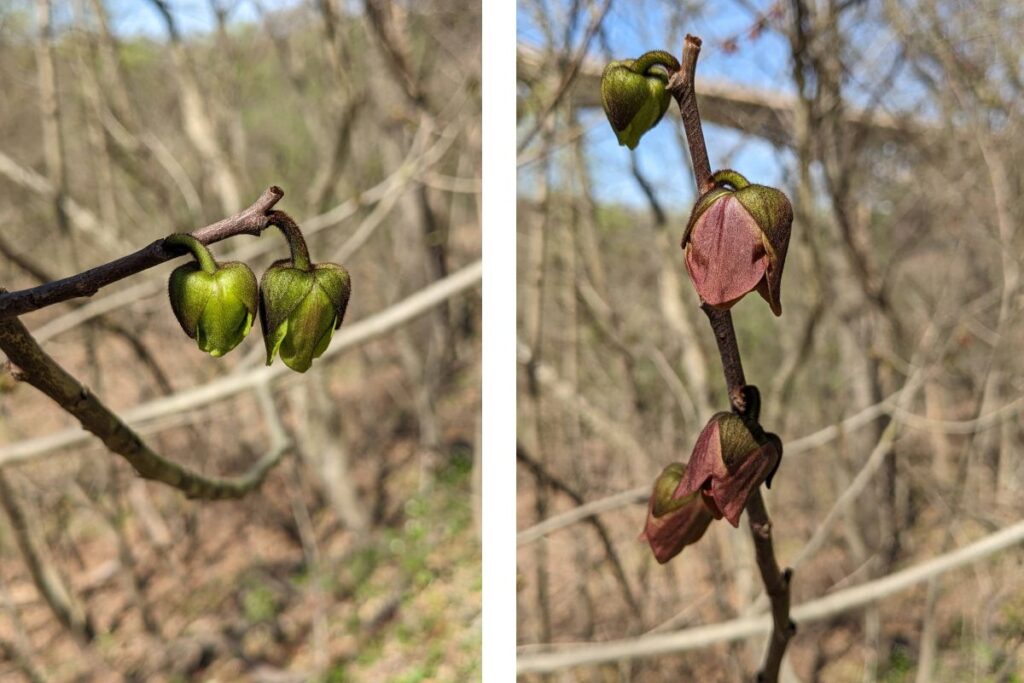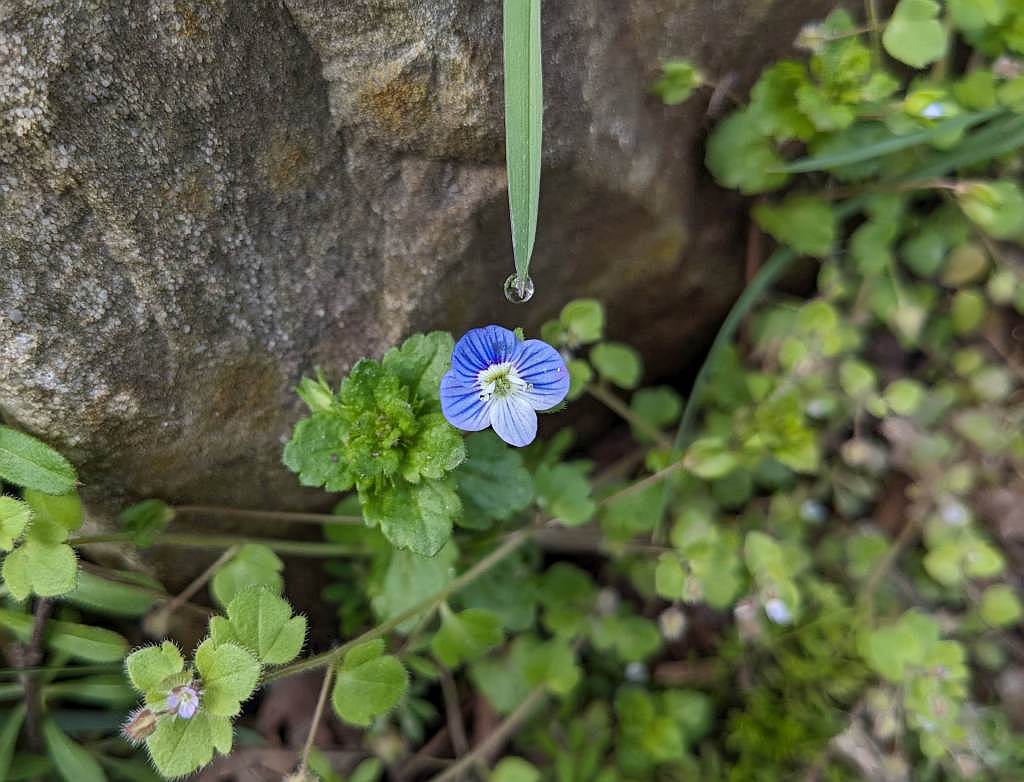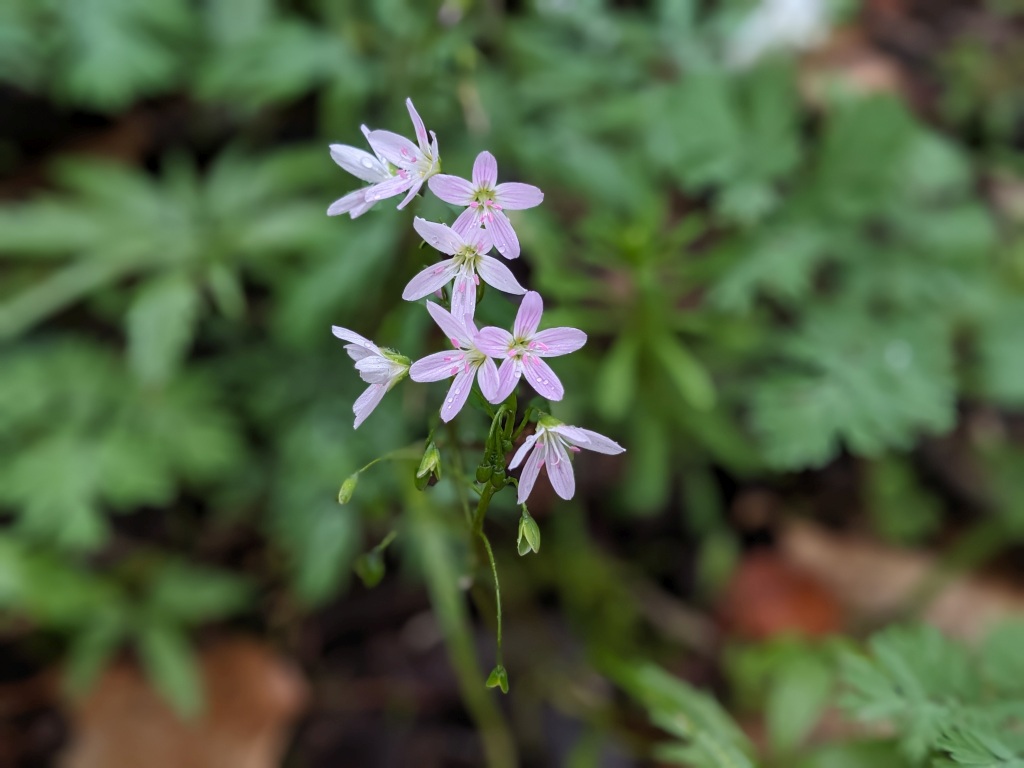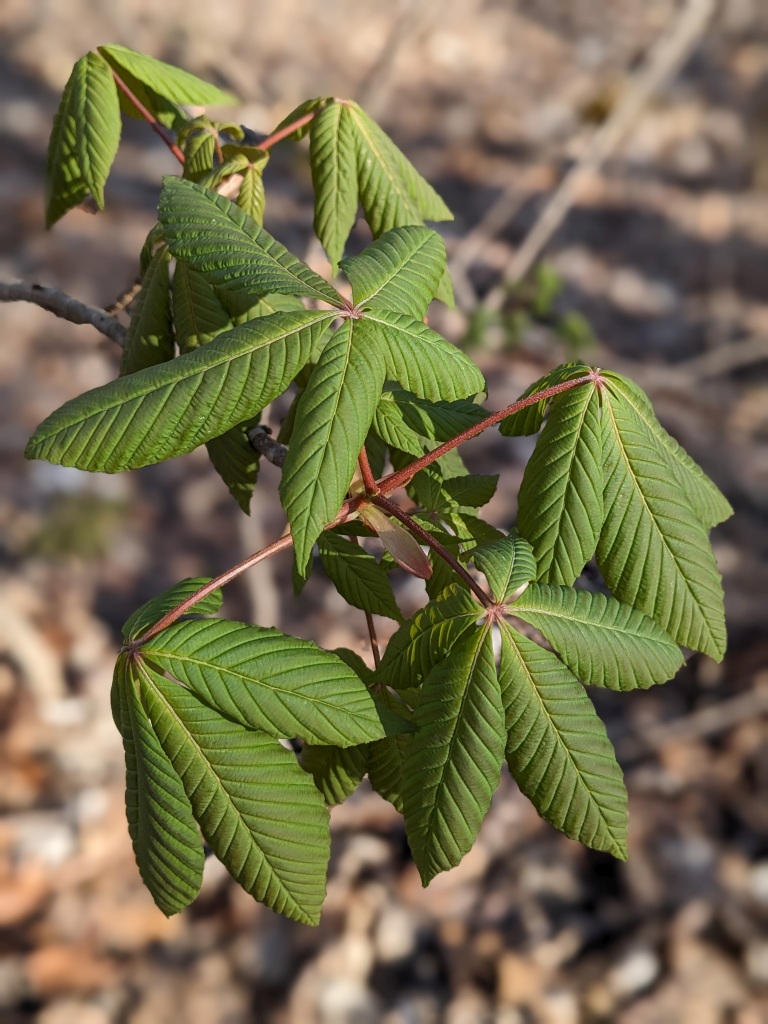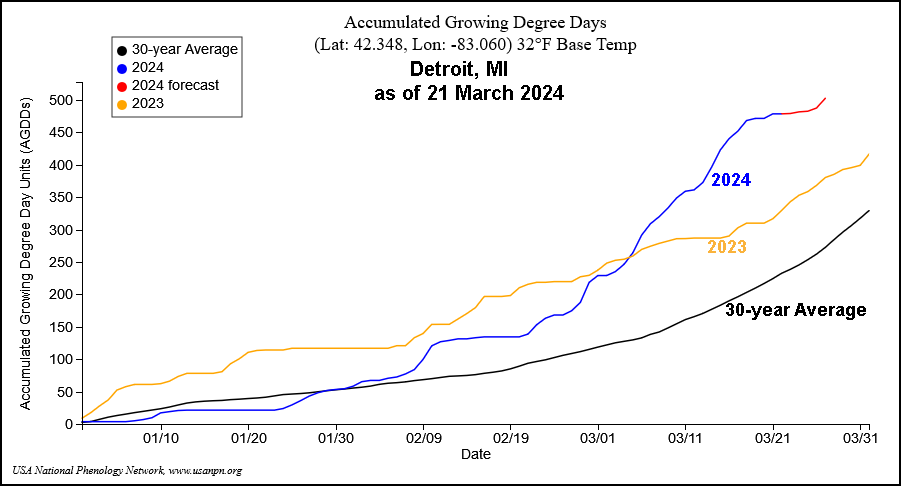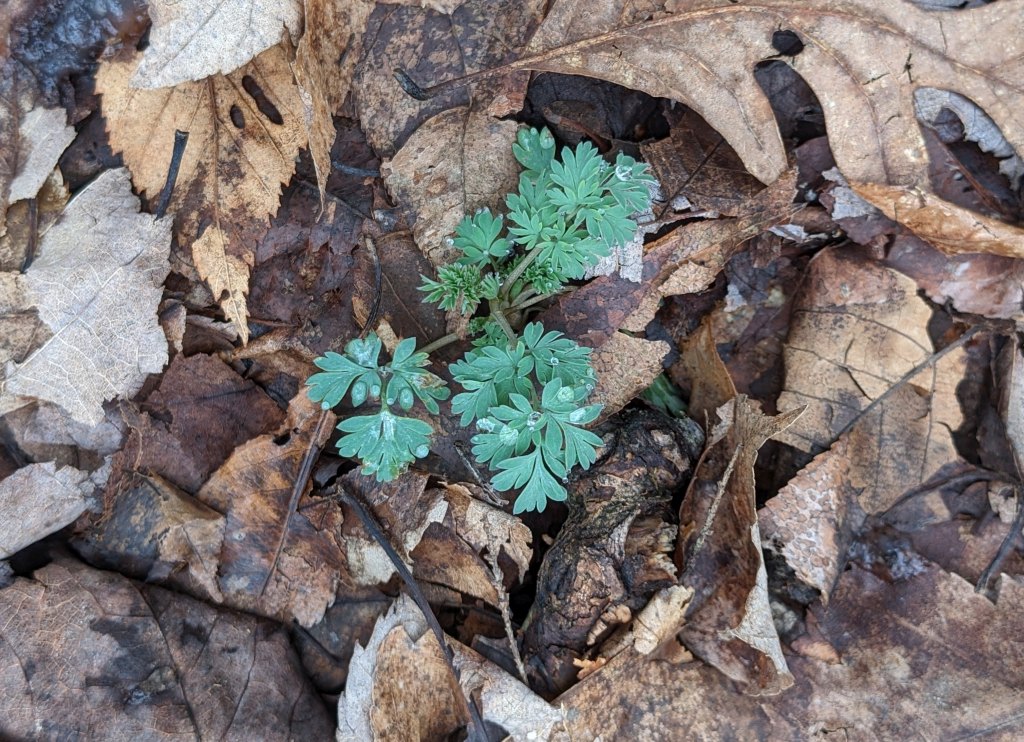
27 April 2024
Last Thursday four of us made our annual pilgrimage to Enlow Fork on the border of Washington & Greene Counties(*) to look for wildflowers and birds. We saw carpets of blue-eyed Mary as well as fire pink, wild geranium and dwarf larkspur in both blue and white. (Can you see the tiny spider on the fire pink petal, above?)


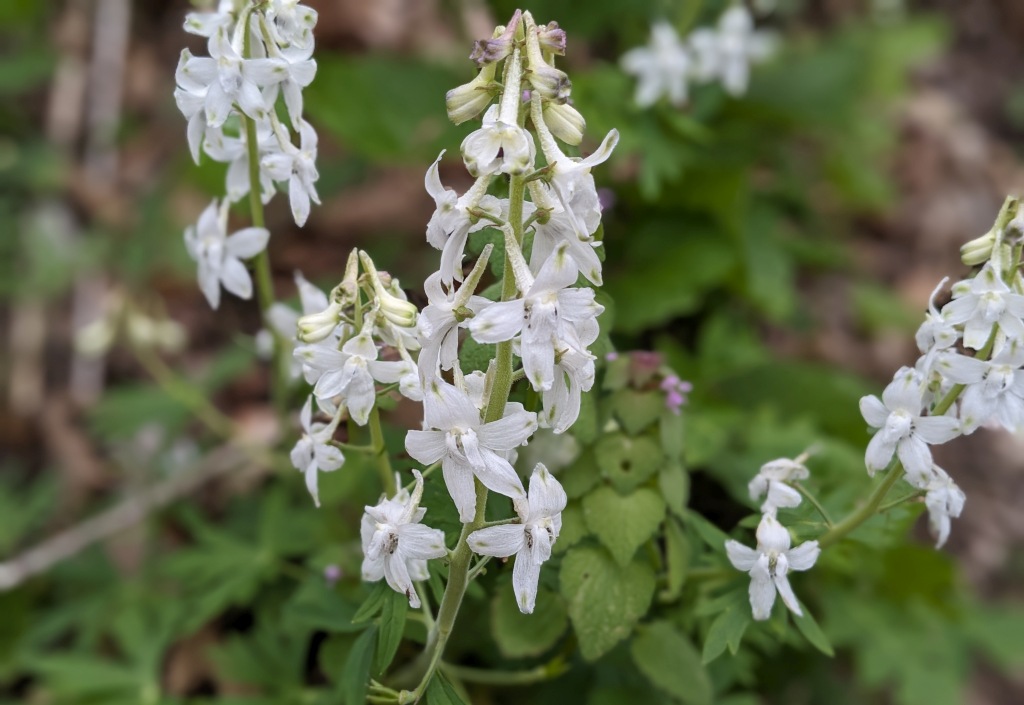
Record-setting rain in the beginning of April left flood debris in the valley. Donna Foyle photographed the fallen trees that nearly hit the pedestrian bridge.

I tried to capture the water-swept mud and flood depth by photographing debris stuck in the trees. The high water mark here was up to my chin.

The floodwaters swept freshwater clams from their homes leaving their empty shells among the flood debris.

We didn’t see many birds at first, perhaps because it was so cold. By the time we were ready to walk back it had warmed up enough to see my First Of Year Baltimore oriole, rose-breasted grosbeak and scarlet tanager deep in the woods.

We also saw or heard seven warblers including Louisiana waterthrush, common yellowthroat, northern parula, redstart, Nashville, yellow and yellow-throated warblers.
At one point I put my bright hat (on top of my sun hat & headband) in case a distant wood thrush would notice. The thrush did not, but I earned the name “Golden-crowned Katelet.”

We had a great day among pale spring leaves and blue-eyed Marys.

Next week will be much warmer. Bring on the birds!
(*) Where is Enlow Fork?
The Enlow Fork of Wheeling Creek forms the boundary between Washington and Greene Counties in southwestern PA. When we say “Enlow Fork” we are referring to the northern section of PA State Gameland #302 on both sides of Enlow Fork creek. The Gamelands (unpaved) parking lot is at this pin drop: https://maps.app.goo.gl/uzw42KqYZexLP4AB6.
(credits are in the captions. Thanks to Donna Foyle and Barb Griffith for contributing their photos)





